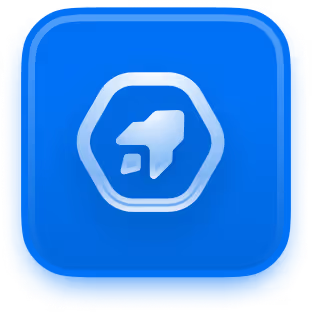_11zon.jpg)
Future Trends in Email Marketing Automation

Email marketing automation is evolving faster than ever, with businesses increasingly relying on AI, personalization, and data-driven strategies. According to Statista, global email users are expected to reach 4.73 billion by 2026, making email marketing a crucial channel for businesses.
Studies show that automated email campaigns generate 320% more revenue compared to non-automated ones.
As technology advances, businesses must adapt to the latest trends in email automation to stay ahead of the competition. In this article, we’ll explore the key future trends in email marketing automation that will shape the industry in the coming years.
Artificial Intelligence (AI) and Machine Learning in Email Marketing
_11zon.jpg)
AI and machine learning are transforming how businesses approach email marketing, making campaigns more efficient, personalized, and engaging.
AI-Powered Personalization
AI enables brands to send hyper-personalized emails by analyzing customer behavior, preferences, and past interactions. Instead of generic emails, AI helps craft messages that resonate with each recipient, increasing open rates by up to 29% and click-through rates by 41%.
Our Success.ai’s AI email writer tool helps you create personalized emails that feel natural and engaging, increasing your chances of getting a response.
Predictive Analytics for Better Targeting
Predictive analytics helps marketers identify customer interests before they even make a move. AI analyzes historical data to predict what content will work best for each subscriber, improving conversions and reducing email unsubscribes.
Automated Email Content Creation
AI-powered tools can now generate subject lines, email copy, and product recommendations that align with user behavior. These tools save time and ensure content is optimized for engagement and conversions.
Smart Send-Time Optimization
AI determines the best time to send emails to each subscriber based on their past interactions. Studies show that send-time optimization increases open rates by up to 23%, ensuring emails are delivered when recipients are most likely to engage.
AI-Driven Email List Segmentation
AI automates the segmentation process by analyzing customer data and categorizing subscribers based on demographics, purchase history, and behavior. This ensures that the right message reaches the right audience at the right time.
Our Lead Finder tool sorts your leads automatically, helping you target the right audience with tailored emails for better results.

AI Chatbots for Email Engagement
AI-powered chatbots are now being integrated into email marketing strategies. They can answer customer queries directly within emails, enhancing user engagement and improving response rates.
Hyper-Personalization and Dynamic Content
Consumers now expect emails that are tailored to their needs and preferences. Hyper-personalization takes traditional personalization to the next level by using real-time data to create unique email experiences.
Dynamic Content Blocks
Dynamic content allows businesses to personalize different sections of an email based on the recipient’s behavior, location, or preferences. This ensures that every subscriber gets a unique experience.
Personalized Product Recommendations
E-commerce brands use AI-driven recommendation engines to suggest products based on browsing history and previous purchases, increasing the likelihood of conversions.
Behavioral Trigger Emails
Automated emails triggered by specific user actions, such as abandoned cart reminders or post-purchase follow-ups, help brands re-engage potential customers and drive sales.
Real-Time Email Personalization
Unlike static emails, real-time personalization updates email content based on when the user opens it. This ensures that offers and recommendations remain relevant and up-to-date.
User-Generated Content in Emails
Featuring customer reviews, testimonials, or social media posts in emails builds trust and boosts engagement. User-generated content adds authenticity to marketing campaigns.
Location-Based Email Marketing
Geo-targeted emails use a subscriber’s location to send personalized offers or updates. Businesses can use this technique to promote local events, store openings, or region-specific discounts.
Interactive and AMP Emails
_11zon.jpg)
Interactive emails enhance user engagement by allowing subscribers to take actions directly within the email, reducing the need to visit external websites.
AMP for Email Technology
Accelerated Mobile Pages (AMP) enable users to interact with email elements like carousels, forms, and checkout buttons without leaving their inbox, improving the user experience.
Embedded Surveys and Polls
Brands can gather customer feedback by including interactive surveys and polls in emails. This helps businesses understand their audience better and improve their products or services.
One-Click Shopping in Emails
E-commerce brands are integrating "Buy Now" buttons in emails, allowing users to complete purchases without being redirected to a separate webpage.
Gamification Elements
Adding interactive games, scratch cards, or spin-the-wheel elements increases engagement and makes emails more fun for subscribers.
Interactive Image Carousels
Carousels allow businesses to showcase multiple products, features, or promotions within a single email, making the content more visually appealing.
Countdown Timers for Urgency
Including countdown timers in emails creates a sense of urgency for limited-time offers, increasing conversions and boosting sales.
Omnichannel Email Marketing Automation
Email marketing is no longer a standalone channel. Businesses are now integrating email with other digital marketing strategies for a seamless customer experience.
Email and SMS Marketing Integration
Combining email and SMS as communication channels is a strategic approach that enhances the effectiveness of customer engagement. By utilizing both mediums, businesses can ensure that important messages, such as order confirmations, shipping notifications, and promotional offers, are delivered to customers through multiple touchpoints.
Email is a versatile platform that allows for detailed communication, enabling businesses to provide comprehensive information about products, services, and promotions. It can include rich content such as images, links, and detailed descriptions, making it ideal for conveying complex messages or showcasing new offerings.
Additionally, emails can be personalized to cater to individual customer preferences, which can significantly enhance the customer experience and foster brand loyalty.
Social Media and Email Cross-Promotion
_11zon.jpg)
Marketers are increasingly leveraging the power of email campaigns as a strategic tool to promote their social media content. This approach not only helps in driving traffic to their social media platforms but also enhances engagement with their audience.
By crafting compelling email newsletters that highlight recent social media posts, videos, or campaigns, marketers can effectively capture the attention of their subscribers and encourage them to interact with their content on various social media channels.
This dual approach not only enhances the overall marketing strategy but also allows brands to build a more robust relationship with their audience. By integrating email marketing with social media efforts, marketers can create a cohesive brand experience that keeps their audience engaged and informed, ultimately driving higher conversion rates and fostering brand loyalty.
Email and Chatbot Integration
Chatbots are a great tool for businesses to improve their marketing, especially for getting more email leads and engaging customers. These smart virtual assistants chat with users in real time, making the experience smooth and helping businesses collect emails easily.
One of the main jobs of chatbots is to interact with website visitors and encourage them to share their email addresses. They do this through friendly conversations, personalized greetings, and special offers.
For example, a chatbot might start a chat by asking if the visitor needs help or offering a special discount or free e-book in exchange for their email. By keeping the conversation natural and engaging, chatbots make it easier for users to share their contact details.
Multi-Device Email Optimization
As mobile device usage continues to rise at an unprecedented rate, it has become essential for businesses and marketers to adapt their email strategies accordingly. This shift in consumer behavior means that emails must be meticulously optimized for a variety of devices, including desktops, tablets, and smartphones.
When we talk about optimizing emails, we refer to several key aspects that contribute to a seamless user experience. First and foremost, the design of the email should be responsive. This means that the layout and content should automatically adjust to fit the screen size of the device being used.
For instance, an email that looks great on a large desktop monitor may appear cluttered and difficult to read on a smaller smartphone screen if it is not designed responsively.
Push Notifications and Email Synergy
Combining push notifications with email marketing is a strategic approach that can significantly enhance a brand's ability to re-engage users who may have overlooked or ignored their email communications.
While email marketing has long been a staple in digital marketing strategies, it is not uncommon for recipients to miss or dismiss emails, especially in an age where inboxes are often flooded with messages.
Push notifications, on the other hand, are a more immediate and direct form of communication that can capture a user's attention in real-time. These notifications appear on a user's device, whether it be a smartphone, tablet, or desktop, and can prompt immediate action. By integrating push notifications with email marketing efforts, brands can create a more cohesive and effective communication strategy.
AI-Powered Omnichannel Marketing
_11zon.jpg)
AI-driven marketing automation tools are revolutionizing the way businesses communicate with their customers by enabling them to deliver highly personalized messages across a variety of channels.
These advanced tools leverage artificial intelligence and machine learning algorithms to analyze vast amounts of customer data, including browsing behavior, purchase history, and demographic information. By doing so, they can segment audiences more effectively and tailor marketing messages to meet the specific needs and preferences of individual customers.
One of the key benefits of using AI-driven marketing automation is the ability to maintain consistency in messaging across multiple platforms, such as email, social media, websites, and mobile applications. This omnichannel approach ensures that customers receive a cohesive brand experience, regardless of where they interact with the business.
Privacy-First Email Marketing Strategies
With increasing concerns about data privacy, businesses must adopt transparent and ethical email marketing practices.
GDPR and CCPA Compliance
Email marketers must comply with data privacy regulations like GDPR and CCPA, ensuring that users have control over their data.
Permission-Based Email Marketing
Brands must focus on obtaining explicit user consent before sending marketing emails, reducing the risk of spam complaints.
Zero-Party Data Collection
Instead of relying on third-party data, businesses are collecting data directly from customers through surveys, quizzes, and preference centers.
AI-Powered Data Protection
AI helps detect fraudulent activities, secure customer data, and prevent email spoofing or phishing attacks.
Transparent Email Tracking Policies
Brands are now informing users about tracking mechanisms in emails, improving trust and compliance.
Blockchain for Email Security
Blockchain technology is being explored to enhance email security, prevent spam, and verify sender authenticity.
Conclusion
_11zon.jpg)
The future of email marketing automation is driven by AI, hyper-personalization, interactive emails, omnichannel integration, and privacy-first strategies. Businesses that embrace these trends will see higher engagement rates, improved customer loyalty, and increased revenue.
To stay ahead in this competitive space, marketers must leverage AI-powered tools, create personalized experiences, and prioritize data privacy. The key to success lies in continuous innovation and adapting to ever-changing consumer behaviors.
For businesses looking to enhance their email marketing automation, our Success.ai offers advanced AI-powered tools to optimize campaigns and improve customer engagement. Check out our website to revolutionize your email marketing strategy today!


Try Success.ai No credit card required
Unlock unlimited access to 700M+ B2B leads, with unlimited email sending & warm-up. Supercharge your growth now with Success.ai!
















.avif)


.avif)





.avif)






.avif)










.jpg)
-min.jpg)









.avif)
.svg)
.avif)

